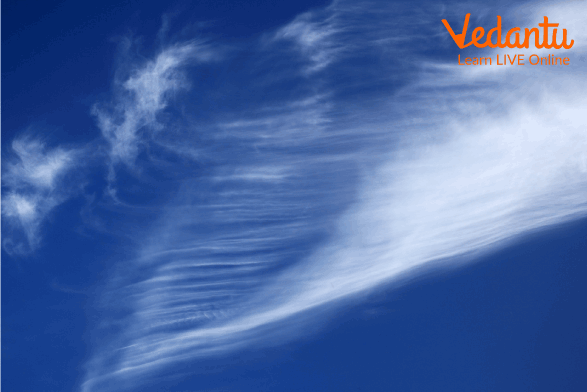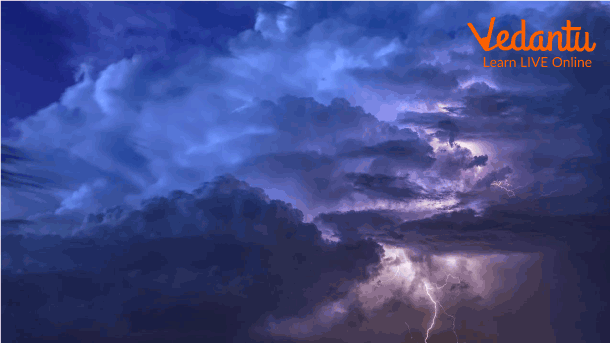




How Clouds are Formed?
Clouds are formed by the process of condensation. The air always contains water in the form of gas which is also called water vapours and these water vapours are invisible in nature but air can hold upto a certain amount of water vapour and this tendency of air is directly dependent on its temperature. The cooler the air, the less water it can hold. So when the air cools, some of the water vapour condenses to form visible water droplets around the miscellaneous particles such as dust and sea salt which are always present in air. Near the ground, this condensed form of water vapour becomes fog but up in the sky, this condensed form of water vapour accumulates to form a light, fluffy structure which we refer as clouds.
Reason Behind White and Grey Clouds
Most of the time clouds appear white in colour because water vapours inside them are tightly packed that’s why they reflect most of the sunlight that hits them, and since most of the sunlight is being reflected, therefore we perceive the colour of the cloud as white. But when there’s a rainy season, the water vapours present inside the clouds get clumped inside the structure itself to form raindrops because of which less light is being reflected and because of that only grey colour is being perceived by us.

Clouds
How Clouds Cause Precipitation
We know that clouds are formed when condensation of air takes place provided air is filled by water vapours till the saturation point. Now if the temperature in the sky further falls, the condensed water vapours get clumped to form tiny water droplets or ice crystals that grow into bigger particles which fall on earth as rainfall or snowfall, generally termed as precipitation.
4 Types of Clouds
There are four major types of clouds according to Meteorologists.
Cirrus:
These clouds are wispy and curly in shape. These are usually made up of ice crystals and are found high in the atmosphere.

Cirrus Clouds
Cumulus:
These clouds are large and lumpy in shape. These are the cause of most of the heavy precipitation and are found close to the ground.

Cumulus Clouds
Stratus:
These clouds are horizontal and layered in shape. They cover the sky in a single pattern and are located at normal height above the ground, neither higher nor lower.

Stratus Clouds
Nimbus:
These clouds are black or grey in texture and are often found at lower altitudes. They block most of the sunlight coming to the earth.

Nimbus Clouds
Sample Questions
1. Describe the formation of clouds.
Ans: Clouds are formed by the process of condensation. The air always contains water in the form of gas which is also called water vapours. When the air cools, some of the water vapour condenses to form visible water droplets around the miscellaneous particles such as dust and sea salt which are always present in the air. Up in the sky, this condensed form of water vapour accumulates to form a cloud.
2. What is the reason behind the greyish texture of clouds?
Ans: When the water vapours present inside the clouds get clumped inside the structure itself to form raindrops because of which less light is being reflected and because of that only grey colour is being perceived by us.
3. When precipitation takes place?
Ans: Precipitation occurs when condensation inside clouds occurs at the level that the droplets become heavy enough to fall down to the Earth's surface.
Conclusion
Clouds are very important in understanding the climate system on earth. With the help of deep, thorough identification of clouds, weather forecast systems work nowadays. Moreover, a variety of cloud datasets is now available to climatologists so that they can run various experiments to make climatology more accurate so that the natural calamities could cause the least possible destruction.
FAQs on What are Clouds?
1. Name the various types of clouds.
According to Meteorologists, clouds are being classified into four types: cirrus, cumulus, stratus, and nimbus.
2. What do you call a scientist who studies climate changes?
Scientists who specialise in the climate field are called climatologists.
3. What are clouds made of?
Clouds are made up of tiny water droplets or ice crystals.
4. Which clouds are thin and wispy in shape?
Cirrus clouds are thin and wispy in shape.
5. What is it that keeps the clouds floating in the air?
Since the clouds are lighter than air, therefore they lie above the air and seem to be floating around.









